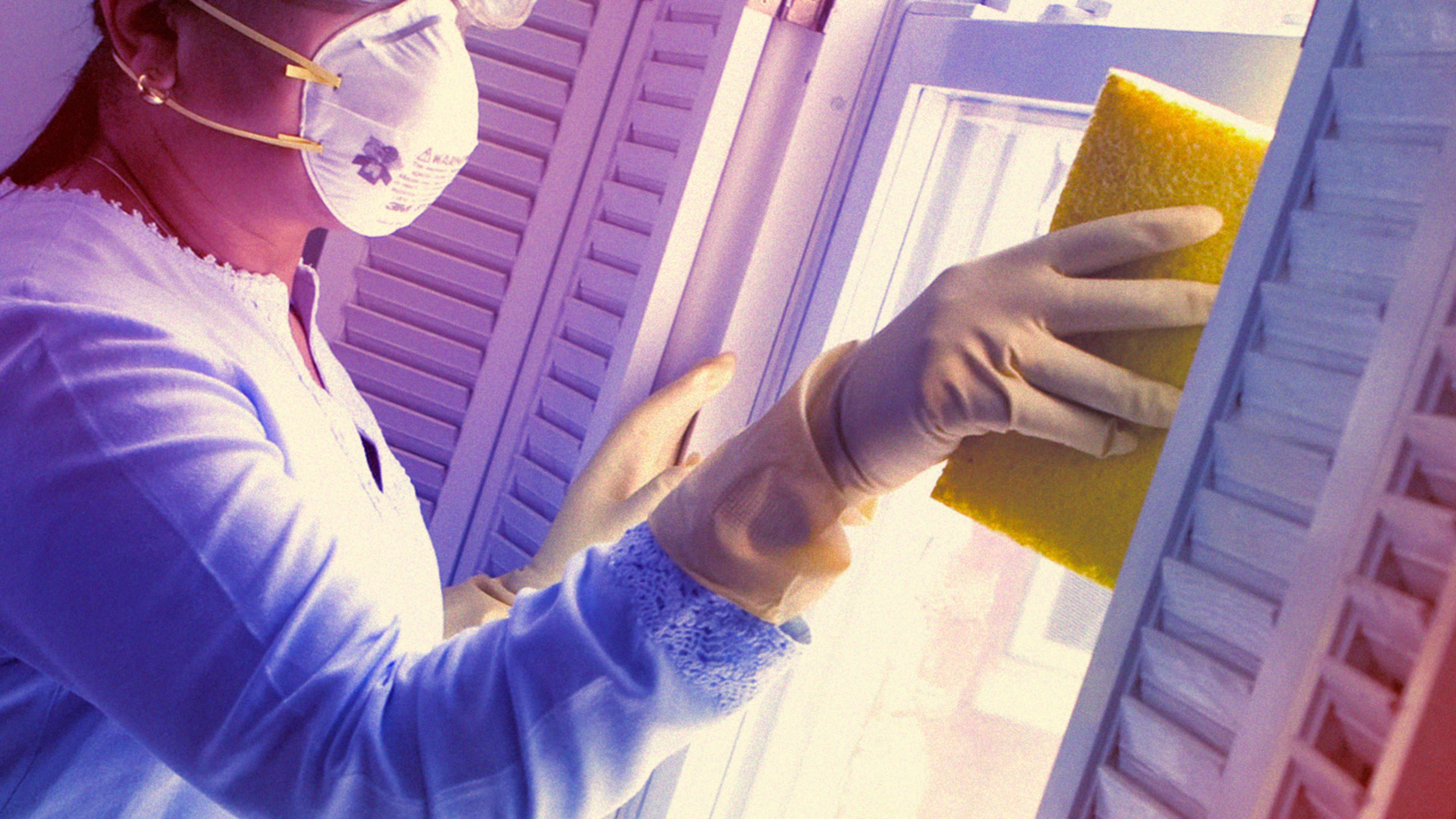The CDC released some rather intense housecleaning guidelines that, if enacted, might consume all of your time. (“Clean surfaces using soap and water . . . tables, door knobs, light switches, countertops, handles, desks, phones, keyboards, toilets, faucets, sinks, etc.” Also, clean all rugs.) You see the problem. Here’s what to do:
If no one in your home is sick . . .
If no one in your home is sick with what might be COVID-19 (or flu or a bad cold), you do not need to spend your days cleaning. Just focus on making sure that COVID-19 doesn’t come into your house by practicing social distancing and accepting deliveries safely. (Let nonperishables sit for 3 days, until any virus dies!) Wash your hands a lot.
If someone in your home is sick . . .
If someone in your home is sick, the CDC says to limit them to one room and bathroom (including meals). Then take up the CDC’s advice for a one-time mega-clean of all areas that person has been near:
- Clean frequently touched surfaces with soap and water. Or disinfect with 70% isopropyl alcohol or bleach (4 tsp bleach per quart water). Both of those can damage some surfaces, so google “Can I put bleach/isopropyl alcohol on my _____”, and test in a corner first.
- Wash fabrics, rugs, covers, and soft surfaces. When in doubt, put it in the laundry. For items you just can’t deal with, such as your cover-free couch or favorite squid-shaped area rug, just don’t use ’em for a few days. You can push items to the side or roll them up as is reasonable.
- Launder like you’re in a contamination zone. You are! Wear disposable gloves and use the warmest settings and heat dry for those items. “Dirty laundry from a sick person can be washed with other people’s items,” says the CDC. This is because the virus likely dies at over 149 degrees. Key move: Clean or disinfect clothes hampers with soapy water, or 70% isopropyl alcohol, or the above bleach mixture.
- Treat the “sick trash” like hazardous waste. It is! Your resident ill person should have her own trash can with its own trash bag, with which you’ll use gloves when removing garbage.
Pro tip for the lazy: You can save yourself the cleaning by simply not using shared rooms, furniture, or equipment for a few days. The latest research indicates that COVID-19 can live for roughly 3 days, so just close some doors and stay off the shared smart bike.
If someone who might be shedding virus was in your home (and, really, that’s anyone), be smart and clean the surfaces that person touched or could have coughed on. No need to go overboard: Though much is unknown about COVID-19 transmission, most cases seem to come from direct proximity to an ill person, not touching the same objects.
Then just wash your hands like your life depends on it—because it might.
Recognize your brand’s excellence by applying to this year’s Brands That Matter Awards before the early-rate deadline, May 3.
